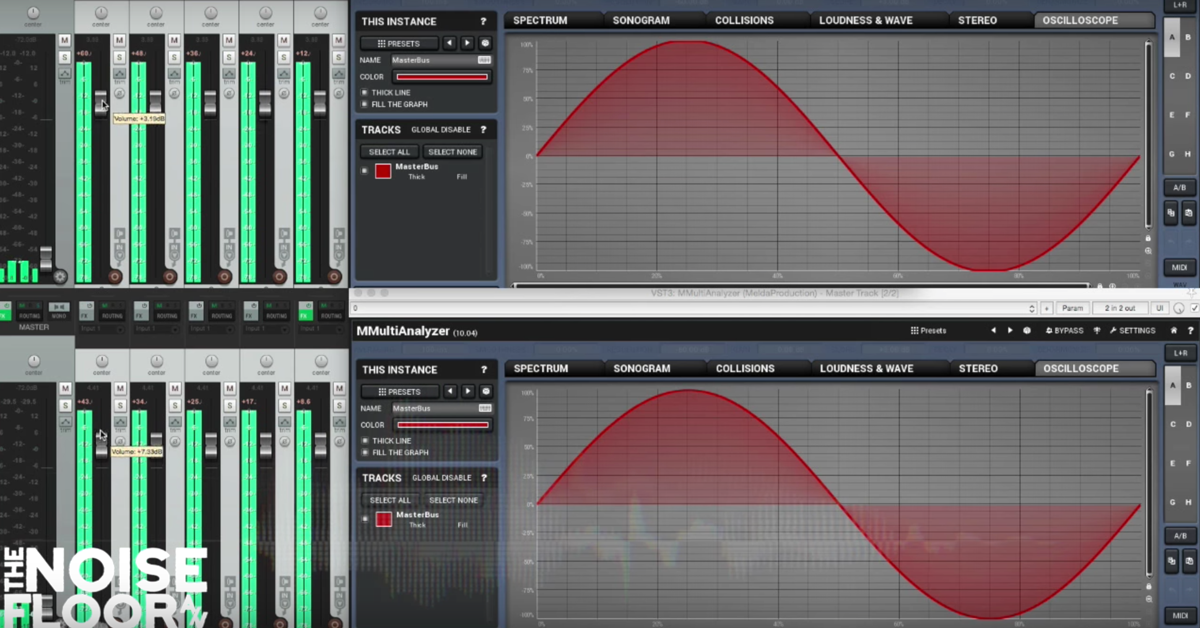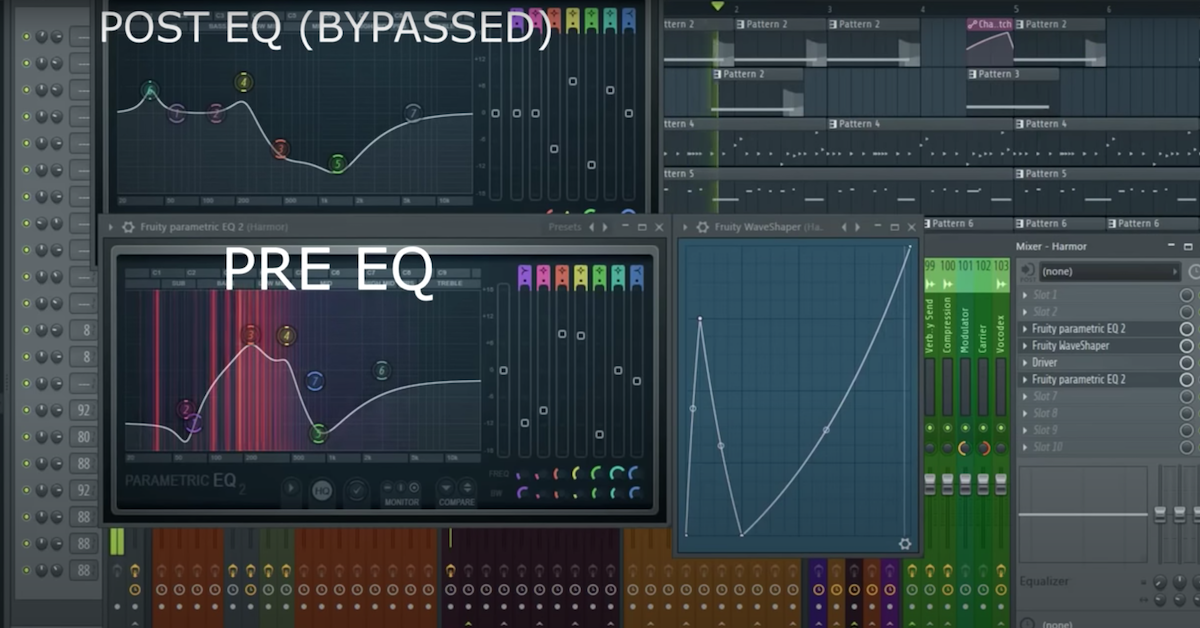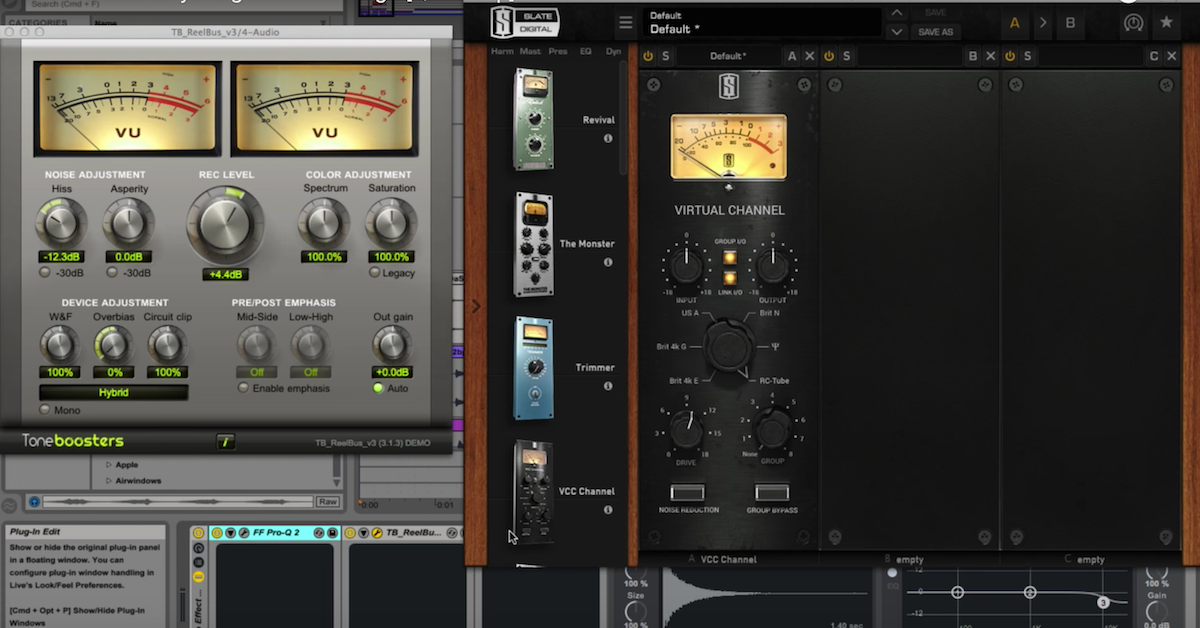Tips for Making In The Box Mixes Sound Analog
Article Content
Ah yes, the coveted “analog sound” — it’s warm and glowy, and bright and full and bass-y and everything your favorite mixes are until you find out your favorite mixes were done completely in the box. Whoops. Turns out, that analog sound is as much fable as it is fact.
A lot of what we attribute to the sound of analog mixing is actually just a really great engineer. We see them in front of a console and fail to recognize they’re not actually using that thing anymore — it’s just a selling point. Which, if you think about it, is great news! It means similar results can be replicated just as well on your end.
With that said, here are five tips on making your ITB mix sound like it was done in the analog world.
1. Distortion
When it comes to the exact mechanism that sonically separates analog from digital sound, the keyword is: distortion. When sound moves along a digital path it is retained in its exact nature unless there’s something deliberately altering it. In analog, this is not the case. Every step along the way occurs some degree of alteration in terms of frequency response and total harmonic distortion.
Each step may be too slight to hear any individual difference, but there are many steps along an analog chain. Any time there is a capacitor or inductor along the path the natural resistance of the transfer stage will induce a tiny change in frequency response. Every stage in which a tube, opamp, or transformer sits will create a bit of harmonic distortion.
Distortion is a good thing. To a slight degree, it creates a richer, more interesting sound. In fact, we usually refer to slight bits of distortion as saturation or color, because it’s not really “distortion” except in the most literal sense. Because distortion isn’t inherent to the digital realm we have to create this color effect manually.
This comes in the form of plugins that have their own built-in saturation/coloring or plugins that are dedicated to the process of sculpting distortion curves. I’ve been a big fan of the Black Box HG-2 plugin lately, along with Soundtoys Decapitator, and the stock Digidesign LoFi. These plugins give me a pretty wide crayon box that I can work with. While it’s true, the handicap of digital is that color isn’t built into the sound, the boon is that we can get whatever colors we want by taking a few extra steps to get it.
2. Physical Faders
The act of moving faders does something different than moving a mouse. There’s just something about the creative process that lends itself to conducting the mix like it’s its own instrument. Fortunately, you can get yourself a faderport of some sort — which I highly recommend. Unfortunately, nothing is that simple.
Depending on your DAW and the plugins you’re running you may incur write errors when performing automation. In the analog world, there is no latency, so this is not a problem. In the digital world, it’s common enough to have several thousand samples of latency. This can require a bit of a work-around when it comes to automating in real time.
3. Working By Ear, Not Eye
Another functional aspect to analog mixing is that it’s all done by ear. Yeah, there are meters on the bridge, and probably some kind of phase scope hanging off in the distance somewhere; but really it’s up to the ears to determine what’s going on.
In the box mixing happens with a screen. We are not only fed stimulus by the changing bright lights but also subject to the bias that occurs when we become cognitively aware of exactly what we are doing and how much we are doing it. There’s something that happens when something tells us we’re doing -10dB of reduction with an EQ that makes our brains go “that’s too much.” It has nothing to do with how it sounds and everything to do with how we think it would sound.
One way to work around this bias is to close your eyes when making the adjustments. Or, you simply train yourself to ignore the numerical information which is much harder than it sounds.
4. Less Surgery
Analog mixing does not lend itself to surgical maneuvering. Even if you have an SSL, you’re only getting three sweepable bands on a channel. Usually “surgical” cuts (that is, narrow cuts to remove an offensive resonance) have a dedicated EQ like a GML. Even if you use all inline bands and a dedicated EQ, you’re only getting six surgical bands and you’re using a ton of gear real estate. Meanwhile, in the digital world you can stack eight instances of Waves Q10 and get 80 surgical bands at the snap of a finger.
In my exceptionally non-scientific opinion, I think one of the things most people associate with “digital sound” or why “digital sounds two dimensional” is that folks get a little over zealous with narrow band attenuation. Or even simply going too far with attenuation in general. Just because there’s a bit of buildup at 700Hz on an acoustic guitar doesn’t mean you need to notch 18dB out of 700Hz with a 0.01 octave band. A couple dB with a one octave band is probably fine to get the job done. Don’t suck the life out in a vain attempt at making things sound pristinely clean!
5. Getting The Front End Right
Probably the biggest misconception is that the glorious analog sound is happening as a result of mixing through some extra expensive console. Taking a flimsy recording and running through a ton of analog gear can improve things — particularly if the engineer is good — but that’s not going to magically impart something on the sound that fully compensates for a poor front end.
One of the reasons that analog is hailed as the gold standard is because the limitations of that workflow forced everyone to really focus on getting things sounding great on the way in. That’s still the best practice today.
This ideology still applies in the world of software samplers. Even if you’re never leaving the software realm, you still want to cater the sound toward being the best it can be during the initial production phase. This means making sure the synths and samples have the tone you want and augmenting it with analog-emulations as you are in the creation process.
The big drawback of digital is you have to micromanage everything — so it’s best to really sculpt the sound at its inception. If you wait until the mix to manage every little detail, you’ll find the mix too daunting and end up saying to yourself “if only I had an analog chain to mix through.”
The big picture here is that a lot of what we call “analog sound” is actually just good engineering. Using color, performing the mix, focusing on the listening process, not over-cleaning the record, and getting things right on the way in yields the majority of that mythical magic.





